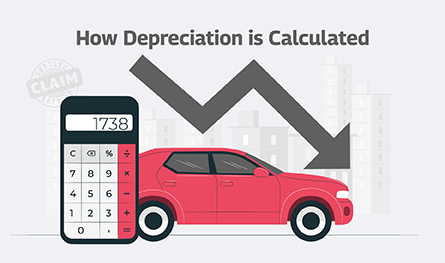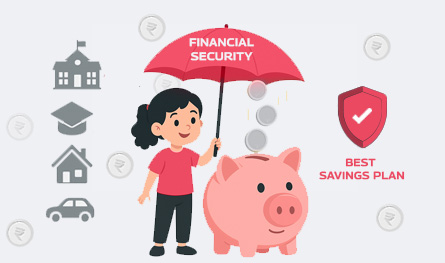How to Choose the Best Bike Insurance Policy for Your Needs
.jpg)
Having a bike is not just about convenience, it’s a huge responsibility. Financial protection of your two-wheeler is important and the best way to ensure that is to have a bike insurance policy that will protect you in case of an accident, theft or a natural calamity. There are so many options when it comes to policies, making it difficult to know what’s best. This guide makes it easier to choose the best bike insurance policy that is suitable for you.
.jpg)
Types of Bike Insurance Policies: What’s Available?
Before choosing a policy, you need to know the types of bike insurance available in India. With this knowledge, you will be able to make an informed decision based on your requirements.
1. Third-Party Liability Insurance
This is the most basic form of bike insurance as per Indian law. It covers:
Causing damage to a third party’s property.
Medical expenses or third-party injury or death.
It meets legal requirements but does not cover damage to your bike.
2. Comprehensive Bike Insurance
A comprehensive policy offers broader protection, covering:
Third-party liabilities.
Accidents, theft, natural calamities or man-made events like riots that cause damage to your own bike.
It also lets you improve coverage by adding the best add-ons for bike insurance.
3. Standalone Own Damage Insurance
This policy covers only damages to your own vehicle. This is perfect for people who have a third-party policy but need some extra protection for their bikes.
Essential Coverage Options in Bike Insurance
Knowing your options for bike insurance coverage means you’re covered for whatever may come your way. Here’s what you should look for in a policy:
1. Accidental Damage
Pays for repairs or replacement of your bike if it’s damaged in an accident.
2. Theft or Total Loss
Gives you compensation equal to the insured declared value (IDV) if your bike is stolen or becomes irreparable.
3. Natural Calamities
Pays for damages due to floods, earthquakes, storms and other natural disasters.
4. Man-Made Disasters
It includes protection against vandalism, riots, and other human-induced events.
5. Personal Accident Cover
This is mandatory in India and provides financial compensation in case of injury, disability or death of the policyholder in an accident.
6. Add-On Covers
Enhance your coverage with the best add-ons for bike insurance, such as:
Zero Depreciation Cover: It ensures that full claim settlement is done without deducting depreciation.
Roadside Assistance: It provides emergency services such as towing or minor repairs.
Engine Protection Cover: Covers damage to the engine due to waterlogging or oil leakage.
Factors to Consider When Choosing Bike Insurance
Choosing the right bike insurance policy requires you to consider a few things before you make a choice. Here’s what you should keep in mind:
1. Type of Coverage
Choose between third-party liability and comprehensive insurance. Third-party insurance is cheaper but comprehensive insurance covers everything.
2. Insured Declared Value (IDV)
The maximum claim amount will be the IDV of your bike, which is the market value of your bike. Pick a policy with a suitable IDV to prevent underinsurance.
3. Premium Costs
Check out premiums offered by various insurers to get a policy that offers the right coverage at a reasonable cost. Cheaper policies may not have the features you need.
4. Claim Settlement Ratio
Choose an insurer with a high claim settlement ratio, which means you will have a hassle-free claims process.
5. Add-On Covers
Get the coverage you need with valuable add-ons like zero depreciation or engine protection. They may increase the premium but provide many benefits during claims.
6. Deductibles
Understand how much you are willing to pay during a claim as a voluntary deductible amount. Lowering your premium means higher deductibles, which means higher out-of-pocket costs.
7. Policy Flexibility
Search for options that are easy to customise coverage, like selecting the best add-on bike insurance according to your needs.
How to Compare Bike Insurance Plans Online
Thanks to the internet, it’s easier than ever to compare bike insurance plans from different providers. Here’s how you can make the most of online tools:
1. Use Trusted Platforms
Web aggregators such as Paybima let you compare policies, premiums and features side by side.
2. Check Policy Features
Compare the coverage, add ons and exclusions by various insurers. Instead, look at the different bike insurance coverage options that are right for you.
3. Read Customer Reviews
The insurer’s service quality, claim settlement process and responsiveness are gleaned from customer feedback.
4. Calculate Premiums
Online premium calculators will help you estimate costs depending on the make, model and location of your bike. Compare similar policies to get the best deal.
5. Look for Discounts
Many insurers offer discounts for long-term policies, no claim bonuses or safety features on your bike.
6. Examine the Claim Process
Pick insurers with a simple, digital-ready claim process. Reliability during emergencies is guaranteed by a high claim settlement ratio.
Third-Party Insurance: It covers damages or injuries to a third party but not your bike.
Comprehensive Insurance: It covers third-party liabilities as well as damages to your bike, providing more coverage.
Take into account how much your bike is worth, how often you use it, and how much risk you’re willing to take. The complete protection comes from comprehensive insurance with relevant add-ons like zero depreciation and roadside assistance.
Premiums are influenced by:
Type of policy (third-party or comprehensive).
Add-ons chosen.
Bike’s age, model, and engine capacity.
Location of registration.
Claim history and voluntary deductibles.
Zero depreciation cover ensures full claims settlement without decreasing bike parts due to any level of depreciation, which is very beneficial to new or highly expensive bikes.

Author Bio
Paybima Team
Paybima is an Indian insurance aggregator on a mission to make insurance simple for people. Paybima is the Digital arm of the already established and trusted Mahindra Insurance Brokers Ltd., a reputed name in the insurance broking industry with 21 years of experience. Paybima promises you the easy-to-access online platform to buy insurance policies, and also extend their unrelented assistance with all your policy related queries and services.
Other Motor Insurance Products
Latest Post
.jpg)
Having a bike is not just about convenience, it’s a huge responsibility. Financial protection of your two-wheeler is important and the best way to ensure that is to have a bike insurance policy that will protect you in case of an accident, theft or a natural calamity. There are so many options when it comes to policies, making it difficult to know what’s best. This guide makes it easier to choose the best bike insurance policy that is suitable for you.


Non-linked, non-participating term plans are the ones that do not participate in the business and profit of the insurance company. These are fixed premium plans where the policyholder pays a fixed amount to ascertain a guaranteed sum as a return to be paid to the nominee in case of his/ her demise. Let’s learn more in this post.


Car depreciation implies the difference between the cost of a car at the time of buying the car and when you sell it. A car insurance claim amount is determined by the car depreciation rate. The car depreciation rate is the reduction in the value of your car over its lifespan caused by wear and tear.


Have you ever caught yourself lost in illusions about your daughter's future events, such as her university convocation and first day at work? Her university convocation. When she embarks upon her initial job after graduation will be the day.

.png)
Accidents can happen anywhere, anytime, by your own fault or another person. What’s important is to be prepared for such mishaps. This is where Own Damage Car Insurance comes in handy.




